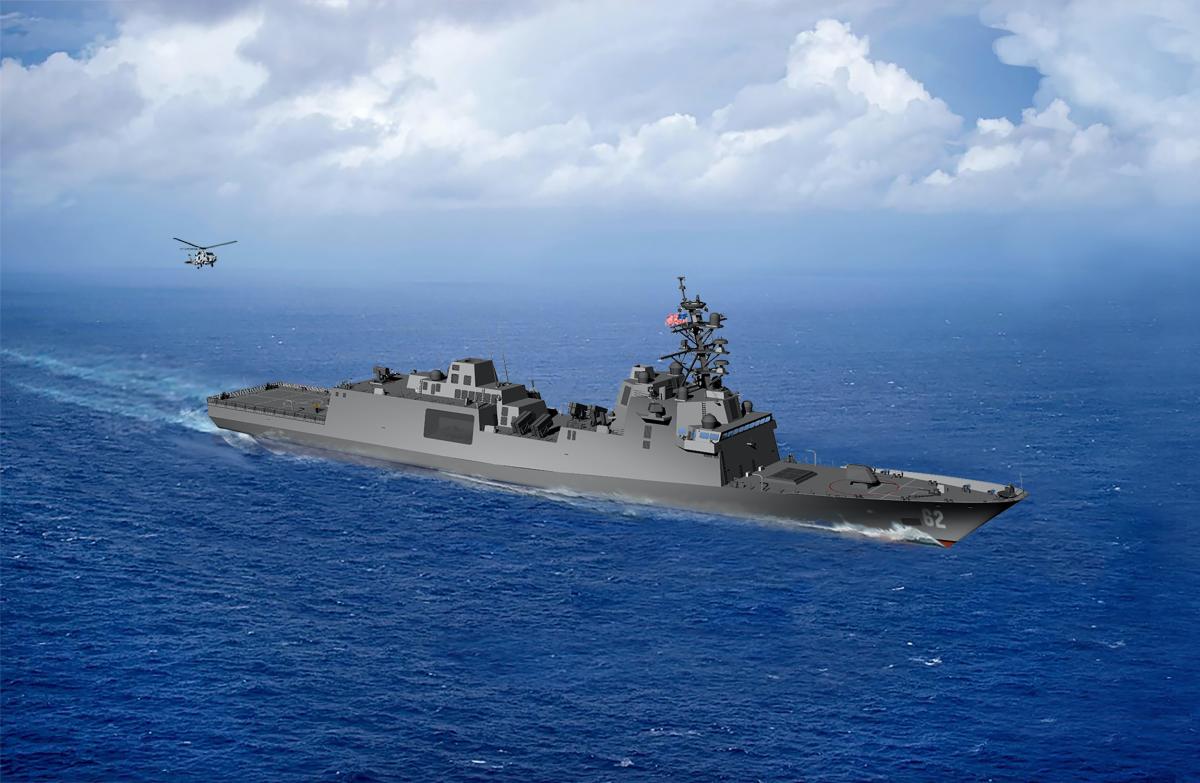The U.S. Navy’s submarine community was in near-crisis; its long superiority in acoustics detection fading. Military competitors were minimizing their submarines’ noise signatures to the point of becoming virtually undetectable. Modernizing the Navy’s sonar systems using traditional acquisition methods would be a multibillion dollar, years-long proposition. Then, a determined group of Navy submariners, acquisitions officials, and experts from the Johns Hopkins Applied Physics Lab (APL) settled on a new approach: replace the submarines’ original closed information technology architecture with an open system that allowed upgrades competed from a variety of sources without creating a major multiyear program or sidelining the submarine fleet. This would take advantage of recent commercial advances (in capability and cost) to frequently upgrade both hardware and software in the sonar system. The result was a dramatic improvement in sonar performance with minimal impact to fleet availability—at a fraction of the projected time and price.
A case study for new rapid procurement authorities combined with bleeding-edge 21st-century technology? Not quite. This transformation in undersea warfare—called the Acoustic Rapid Off-the-Shelf Insertion, or ARCI—was conceived in 1996 and has since been used to modernize submarine systems. Some elements, in particular the use of modular open systems architecture (equivalent to “plug and play” for software) and commercial off-the-shelf (COTS) procurement have been adopted across the defense enterprise. But the ARCI “special sauce” never quite took hold across the Navy or other military services.
In the meantime, the defense acquisition system over the past quarter century has veered from one extreme to the other. Beginning in 2009, the Weapons Systems Acquisition Reform Act (WSARA) and Better Buying Power initiatives of the Barack Obama administration has the Department of Defense (DoD) emphasize more control and oversight. The priority was to prevent the cost overruns, schedule delays, and performance problems that bedeviled programs like the Army Future Combat System, F-35 Joint Strike Fighter, Marine Corps Expeditionary Fighting Vehicle, and nearly every new Navy ship. Then came a potpourri of “rapid” and “agile” authorities codified in recent National Defense Authorization Acts and operationalized by Pentagon leaders. The goal was to break through the bureaucratic snarl of defense acquisitions to provide more speed, flexibility, and access to nontraditional technology providers.
Two Pipelines
Today, the defense acquisition system has come to resemble two parallel pipelines that veer near one another but never quite touch. Through one long, narrow, and relatively slow pipe passes the “big stuff”—major platforms such as ships, missiles, aircraft, and combat vehicles—using traditional acquisition methods. This is the much-maligned traditional defense acquisition system with its rules, benchmarks, requirements, and other strictures. This long pipe can be painfully slow, but for good reasons. It must ensure that complex and expensive new weapon platforms do what they are supposed to, are safe for operators, can withstand severe conditions, and include a sustainment/training apparatus that will last as long as the system is employed. This approach, for all its downsides, has produced the most accurate and effective weapon systems in the world for more than a generation.
However, in seeking to minimize program risk—delays, cost overruns, and technology failures—the traditional system creates a measure of strategic risk. Because the pace of technological change aids potential adversaries as well as friends, DoD can no longer plug along, taking 10, 20, or more years to field a new system that requires overhaul or flirts with obsolescence as soon as it is fielded.
This is where the second pipe comes in, one that is wide, slick, and, as will be discussed, showing a few leaks. Into this channel are stuffed rapid prototyping/rapid fielding, other transaction authorities (OTAs), and various other rapid acquisition approaches. They are useful tools for wartime urgency, fielding niche capabilities, add-ons to legacy platforms, or getting new technology downrange faster, albeit in low numbers. So far it has been mostly limited to the “small stuff”—small unmanned aerial vehicles, communications prototypes, new types of remote sensors, and other lower-cost capabilities.
This fast pipe is a great way to get a particular piece of technology prototyped and across the “valley of death”—the proverbial expanse keeping promising innovation from becoming programs of record. This pipe is not so great after the innovation reaches the other side of the valley. The output can be valuable—at least for a time—but these prototypes are not fielded in numbers with the corresponding training and sustainment pipeline. The program, such as there is one, is held together by the bureaucratic equivalent of “string and chewing gum.” It is rarely the path to large-scale production for a major weapon system—the kind measured in billions of dollars—that can be fielded, supported, and deployed effectively for decades.
Recently, the Pentagon has gamely tried to push the two pipes a little closer—or create some new pipes. At the end of 2019, former Under Secretary of Defense for Acquisition and Sustainment (A&S) Ellen Lord issued new policies for middle tier acquisitions (MTAs) in conjunction with other rapid authorities to provide more “hybrid” options for adopting new capabilities. The guidance brought more discipline to rapid fielding/rapid prototyping while still preserving a modicum of speed and flexibility. Yet even the “Goldilocks” approach, with limits on time and funding, does not provide a scalable answer for major complex platforms that will be needed in some form for decades.
One of the most contentious modernization and acquisition issues of the past decade—indeed, of any decade—is the Navy’s shipbuilding program. Whether the target number of vessels is 350 or 500, there is no way to come close to achieving it without a dramatic change in the way the service designs and develops ships. According to published reports, the new Constellation-class frigate will provide one important test of combining different acquisition tools—traditional for the hull, more rapid and agile for subsystems and components—in a modular construct. Achieving sufficient numbers also will require building and counting at least some unmanned vessels— platforms more autonomous and lethal than what has been deployed to the Navy battle fleet so far.
To reach these goals in the Navy and across the force, DoD must be willing to learn from what has worked before, even if that means digging further into history. It requires a willingness to take responsible risks coupled with a larger systems-integration role for the government. All elements were present to varying degrees with ARCI during the late 1990s. With today’s advanced technology and more flexible acquisition rules, the time is ripe for this approach to achieve wider adoption and success across the defense modernization portfolio.
In this respect, submarine acoustics provided a guide to what is possible with a fortuitous alignment of talent, circumstances, and resources. These elements are unlikely to replicate and align themselves by chance (as the past two decades of defense modernization efforts have shown). New laws and regulations are not necessarily required, but the structure and assumptions of defense contracts will need to be fundamentally rethought.
Wither the Prime?
The fundamental challenge is not principally a technical problem, but one of government contracting and expertise. Cold War–era submarines were not designed in a modular way that allowed new components to be swapped in from diverse sources, and neither are most major weapon systems today. For ARCI, the modularity had to be created by the Navy undersea community. In that case, the Submarine Combat and Weapons Control Program Office (PMS425) took over the prime contractor’s source-selection function.
Lockheed Martin would retain prime integrator status for sonar, but the Navy bid software integration in each of the five hydroponic “strings” (sensors deployed outside the submarine) separately. Lockheed did win one of those string-integrator contracts, but others went to different sources, including the University of Texas.
To extend this concept to other weapon systems, the government, or military service program office, will need to “own” the technical baseline—a goal the Air Force pursued for recent recapitalization programs. Modularity must be driven into the contracts and the contracts must have teeth. A great deal of a contract’s long-term business case lies in the subcomponent and sustainment work, which depend in large part on the prime contractor retaining the technical baseline and the intellectual property that goes with it. Consequently, DoD must find other incentives to attract these companies, which are still indispensable repositories of integration experience and talent, to participate in these major programs.
Some acquisition experts recommended designating one major contractor to focus on integrating only the program. These integration contractors would not be eligible to bid on any other components, major systems, or even assembly. In theory, companies could specialize as integrators of modular systems. As a practical matter, it is difficult to see how a firm would perform this function in isolation from all other aspects of its development and production. As any prime contractor will tell you, they all inform and support one another. Still, with strong government support, new companies or company divisions could spring up to perform this role.
DoD as Systems Integrator
ARCI demonstrated at least two major factors that would allow the Navy to act as systems integrator, at least for a time, for a complex weapons system. The first involved the role of outside experts. APL staff helped derive the modular insertion model for acoustics, and APL personnel were embedded with the Navy undersea team for the sourcing and integration process. Today, considerable systems-engineering expertise resides in University Affiliated Research or Federally Funded Research and Development centers (UARCs or FFRDCs). Institutions such as APL, MIT Lincoln Labs, MITRE, and others are chartered to generate new technology applications that are transitioned elsewhere (usually a defense contractor) for final development and production. Their personnel are routinely embedded with military research labs and development teams.
The second involves the government’s human capital, either to play a more direct role in the systems integration or own the technical baseline altogether as a defacto prime contractor. It is not a coincidence that one of the Navy’s most seasoned and tech-savvy program managers, working within the service’s most technically elite warfare community, oversaw ARCI. Budget cuts and a broader embrace of outsourcing drove government to effectively gut the broader defense acquisition workforce during the 1990s by roughly 20,000 full-time military and civilian personnel. Though modernization spending would spike after 9/11, the career acquisition workforce stayed roughly the same. By 2010, then–Secretary of Defense Robert Gates complained that “we have contractors supervising other contractors, with predictable results.” Secretary Gates initiated an effort to rebuild the acquisition workfoce and, while the total numbers have rebounded since, the invaluable expertise in contracting and engineering has not.
Developing such a workforce will take years. It may require establishing a different employment category untethered from civil service pay scales and regulations. The services must be able to pay market rates (within reason) to attract the talent needed to manage these complex programs. The government would need more freedom to hire, fire, promote, and demote—similar to a private entity. If impossible legally within the government, some quasi-public-private entity could be established to initially assume the lead-integrator function. As noted earlier, the chartered research centers could play an indispensable role here.
The most important goal is getting the right people thinking about the right problem. It is not a matter of regulation or even innovation. And it should be noted that the goal of this shift is not a cost savings. The kind of robust and sophisticated weapon systems needed to prevail against technologically formidable adversaries will always require a considerable investment of taxpayer dollars, bureaucratic support, and political will. These cannot be magically waved away by innovation. The imperative the nation’s defense community faces today is the need for speed. It must adopt new technology faster to keep pace with our potential adversaries. This will take an approach that reconciles the military imperatives of traditional programs with processes that allow for rapid technology insertion.






